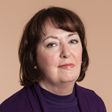What's Next for Stocks
The bulls aren’t ready to end the party, but don’t expect it to be all fun and games.


Welcome to the warp-speed, whiplash stock market. Following the shortest bear market ever, the S&P 500 soared 60% from its March 23 low to a record high on September 2. A reversal brought the benchmark down nearly 7% from a record high in just three trading days, with the tech-heavy Nasdaq falling from its apex into official correction territory, down 10%. Is the correction over? The bull-market case remains strong, but so does the case for a very choppy market coming up.
Many market watchers said the recent pullback was due, and some wondered how stocks had risen so far in the first place, given the economic suffering caused by COVID-19. “There is a widespread narrative that Wall Street bullishness is divorced from Main Street fundamentals,” says Leuthold Group chief strategist Jim Paulsen. “However, the marriage between Wall Street and Main Street looks as strong as ever.” That’s because the stock market looks ahead—and focuses not on whether things are good or bad, but whether they are getting better or worse. By that measure, many economic and market indicators are flashing green.
On the heels of a contraction in gross domestic product of nearly 32% in the second quarter—the worst quarter ever—the third quarter will show a sharp turnaround, with the Atlanta Federal Reserve’s GDPNow model (which is not an official forecast) showing growth at an annual rate of 30.8%. The model predicted third-quarter growth of just 11.9% on July 31, indicating that “the rebound is accelerating,” says Phil Orlando, chief stock strategist at investment firm Federated Hermes. Federated estimates that third-quarter GDP will rise at a 23.2% annual rate, followed by growth of 8.9% in the fourth quarter.
From just $107.88 $24.99 for Kiplinger Personal Finance
Become a smarter, better informed investor. Subscribe from just $107.88 $24.99, plus get up to 4 Special Issues

Sign up for Kiplinger’s Free Newsletters
Profit and prosper with the best of expert advice on investing, taxes, retirement, personal finance and more - straight to your e-mail.
Profit and prosper with the best of expert advice - straight to your e-mail.
In August, the unemployment rate fell to 8.4%, from a peak of 14.7% in April. “Eight percent unemployment is really bad,” says Orlando. “But it’s a lot better than 15%.” Auto sales have surged, housing is in a boom, and the manufacturing sector has expanded for four months in a row, according to a survey of purchasing managers.
Wall Street analysts expect earnings for companies in the S&P 500 index to drop nearly 20% this year compared with 2019—but they see a 28% jump in profits for 2021. And the Federal Reserve remains a strong support for stocks, signaling in mid September that it plans to keep its benchmark short-term interest rate near 0% through 2023. With yields on bonds and cash so low, stocks by comparison become more attractive, prompting the TINA (there is no alternative) rationale for stocks among many pros.
Still, it’s not all gangbusters ahead. “It has been a V-shaped economic recovery, but it will turn more wavy from here,” says Bob Doll, chief stock strategist at investment firm Nuveen. For stock investors, that means a lot of “churn,” he says, as the market also grapples with geopolitical uncertainty—the U.S. election, primarily—and sorts out the next bunch of market leaders. Overshadowing all is the risk of a second wave of coronavirus versus the race for an effective vaccine. Stocks are likely to close out the year “without big upside and no big downside—but with a lot of chop,” says Doll.

What to do now. Stock valuations overall, and especially for fast-growing tech stocks that have been leading the charge, are lofty. Although strategists have been lifting year-end forecasts for the S&P 500 to keep up with surging stock prices, “the easy money has been made,” says Orlando. His firm has already recommended that investors pocket some profits in large, U.S. growth stocks and spread some of the proceeds among areas he expects to play catch-up: U.S. small-company stocks, value-priced stocks—those trading at relative bargains in relation to earnings and other measures—and international shares.
And, yes, that means you should pare back your tech holdings. “Are you loaded to the gills in tech stocks? Congratulations,” says Doll. “Take a bow, and take some money off the table.” Or at least consider the next generation of tech leaders, say analysts at Goldman Sachs. Compelling opportunities include companies helping to computerize health care, digitize businesses and automate work processes, as well as e-commerce, digital payment and biotech firms. Stocks the analysts recommend include Intuitive Surgical (ISRG), Autodesk (ADSK), ServiceNow (NOW), PayPal (PYPL) and Vertex Pharmaceutical (VRTX).
Profit and prosper with the best of Kiplinger's advice on investing, taxes, retirement, personal finance and much more. Delivered daily. Enter your email in the box and click Sign Me Up.

Anne Kates Smith brings Wall Street to Main Street, with decades of experience covering investments and personal finance for real people trying to navigate fast-changing markets, preserve financial security or plan for the future. She oversees the magazine's investing coverage, authors Kiplinger’s biannual stock-market outlooks and writes the "Your Mind and Your Money" column, a take on behavioral finance and how investors can get out of their own way. Smith began her journalism career as a writer and columnist for USA Today. Prior to joining Kiplinger, she was a senior editor at U.S. News & World Report and a contributing columnist for TheStreet. Smith is a graduate of St. John's College in Annapolis, Md., the third-oldest college in America.
-
 Stocks Struggle Ahead of November Jobs Report: Stock Market Today
Stocks Struggle Ahead of November Jobs Report: Stock Market TodayOracle and Broadcom continued to fall, while market participants looked ahead to Tuesday's jobs report.
-
 7 Dr. Seuss Quotes Retirees Should Live By
7 Dr. Seuss Quotes Retirees Should Live ByYou're off to great places! Why Dr. Seuss is the retirement guru you didn't know you needed.
-
 Fed's Rate Cuts Could Have Impacts You Might Not Anticipate
Fed's Rate Cuts Could Have Impacts You Might Not AnticipateUnderstanding how lower interest rates could impact your wallet can help you determine the right financial moves to make.
-
 What Is AI? Artificial Intelligence 101
What Is AI? Artificial Intelligence 101Artificial intelligence has sparked huge excitement among investors and businesses, but what exactly does the term mean?
-
 The Best Tech Stocks to Buy
The Best Tech Stocks to BuyTech stocks are the market's engine of growth. But what defines a tech stock? How do you find the best ones to buy? We take a look here.
-
 All AI Regulations Are Not Created Equal: Kiplinger Economic Forecasts
All AI Regulations Are Not Created Equal: Kiplinger Economic ForecastsEconomic Forecasts As Congress regulates artificial intelligence, tech advocates urge lawmakers to define different areas of AI, as some are more dangerous than others.
-
 Best Banks for High-Net-Worth Clients
Best Banks for High-Net-Worth Clientswealth management These banks welcome customers who keep high balances in deposit and investment accounts, showering them with fee breaks and access to financial-planning services.
-
 Text-Generating AI Faces Major Legal Risks: Kiplinger Economic Forecasts
Text-Generating AI Faces Major Legal Risks: Kiplinger Economic ForecastsEconomic Forecasts Major legal risks to text-generating artificial intelligence: Kiplinger Economic Forecasts
-
 Stock Market Holidays in 2025: NYSE, NASDAQ and Wall Street Holidays
Stock Market Holidays in 2025: NYSE, NASDAQ and Wall Street HolidaysMarkets When are the stock market holidays? Here, we look at which days the NYSE, Nasdaq and bond markets are off in 2025.
-
 Stock Market Trading Hours: What Time Is the Stock Market Open Today?
Stock Market Trading Hours: What Time Is the Stock Market Open Today?Markets When does the market open? While the stock market has regular hours, trading doesn't necessarily stop when the major exchanges close.
-
 Bogleheads Stay the Course
Bogleheads Stay the CourseBears and market volatility don’t scare these die-hard Vanguard investors.